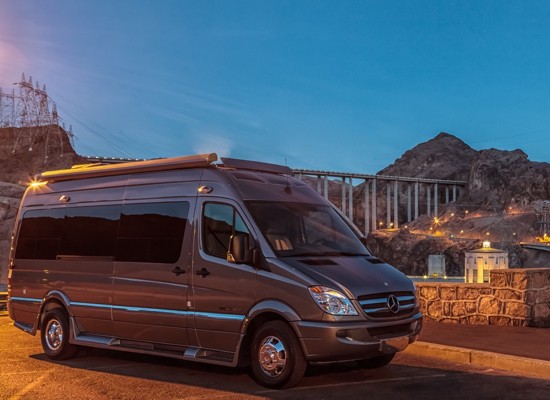
If you’re buying a new RV, you have a lot of factors and choices to think about. After you’ve narrowed down the field to the specific model you want (perhaps with the help of my 2016 Sprinter RV Buyer’s Guide, if you’re looking at Sprinter RVs), you have factory options to pick, or maybe just the best options available from a local dealer. Here are four key tips that may save you hundreds (or even thousands!) of dollars during or after your RV purchase:
Do Your Pre-Delivery Inspection at the Factory/Dealer
It’s really important to do a pre-delivery inspection (PDI) to identify any issues with your new RV. Motorhomes have complex systems, and there are always some things that need to be tweaked even for a newly-built unit. If it’s a new rig, fly out to the factory and take delivery there. If it’s a used motorhome, do your inspection at the dealer. Doing a thorough PDI will save you a huge amount of hassle, time and travel/labor charges, especially if you do it at the dealer/factory, or just take a short “shake-down cruise” right from there. You don’t want to have to take it back to the other side of the country, find out there are issues, then find a dealer, bring in the vehicle, and wait for repair authorization from the original builder or dealer. The builder/dealer also can’t claim the issue was the fault of another dealer or incompetent mechanic. Also, if asked to sign any paperwork stating that you take delivery of the vehicle and there are no problems, refuse to sign until you verify that all problems you identified have been fixed.
Make Sure Your Charger Matches Your Batteries
Many, many manufacturers are not specifying the right inverter/chargers, converter/chargers, or solar charge controllers for the batteries they use for the RV house battery bank. Why is this important? Because this is leading to many cases of premature battery death, costing RV owners hundreds or thousands of dollars, and the RV owners are left footing the bill! For your RV, get the spec sheet for the charger, get the spec sheet for the batteries, and compare the two. Make absolutely sure that (if you have AGM, gel or standard flooded lead-acid batteries) the charger is a multi-stage charger with at least bulk, absorption and float cycles, and the voltage set points for each of those cycles match the voltage set points required by the specific battery model you have for your battery bank. If you have lithium batteries, you should have just a single-stage bulk charger. Make sure your batteries live a long and useful life!
Make Sure You Get a Front-End Alignment
If you’re just looking to buy a new or used motorhome, during your walk-through and drive, check the alignment of the steering wheel and the feel of the steering. Is the steering wheel off to one side or the other, or does it require any steering to keep going straight while driving down a straight highway? If it’s a used rig, check the wear patterns on the tires. Manufacturers claim a proper front-end alignment is your responsibility, so they do not perform one after an RV upfit. Many RV owners replace tires prematurely because they did not have a front-end alignment performed at purchase. If you see these signs on a new or used rig, ensure you take it to a reputable shop and have a full front-end alignment done. It’ll ensure you’re not paying hundreds of dollars for new tires much too soon!
Now Could Be The Time for Solar and Lithium Batteries
For those of you considering adding RV solar systems – quality US-assembled solar panels (like those from Grape Solar) can even be had at Costco and Home Depot these days, and they’ll still be producing power 25 years from now! If you have a bill from a solar installer for adding a solar system to your RV, you can take the 30% residential solar tax credit, since an RV qualifies as a second home for tax purposes (I would guess that just buying an RV with a solar system doesn’t qualify, since you don’t have documentation for the cost of the solar system components). The credit was supposed to expire in December, and now it’s been extended for 5 more years. Ask your tax accountant to make sure, but I think if you wanted to pair adding solar with switching your house battery bank to lithium batteries, now might be the time to do it, and take a tax credit for it. Check out IRS Form 5695 and its instructions for the details.
I hope that this information helps you save some money with your RV!
And if you or anyone you know are in the market for a new Sprinter-based motorhome, please check out my new 2016 Sprinter RV Buyer’s Guide!




Comments on this entry are closed.